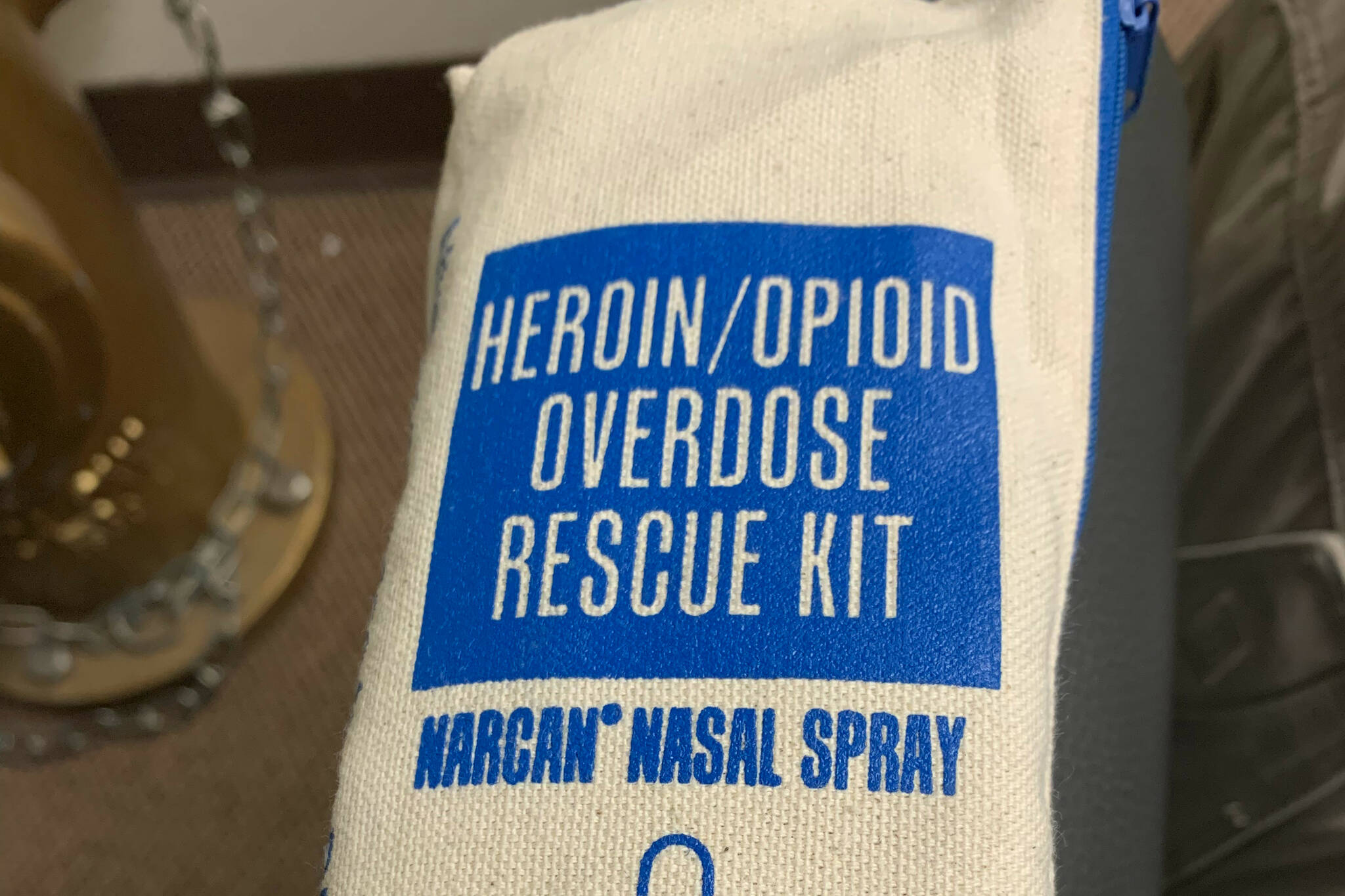When you need help from emergency services, you typically don’t need it in 15 minutes: you need it now.
To that end, Capital City Fire/Rescue is working under the auspices of a larger state program to push access to Narcan, which helps counteract overdoses from opioids, out to the community.
“All of our transport rigs, our engines, and even our (Community Assistance Response and Emergency Services) vehicle are going to carrying it soon,” said Andrew Pantiskas, CCFR’s emergency medical services officer, in a phone interview. “We’re giving them the ability to not have to go in for that kit, and improving patient care overall.”
[Juneau team washes away regional oceanography quiz bowl]
Community distribution, scheduled to begin next month, is part of Project Hope, a state Department of Health and Social Services program to help combat opioid overdoses in the community, Pantiskas said. The program will distribute Narcan kits to individuals that are having an opioid overdose, so that themselves or someone around is having an opioid overdose in the future, they have the response at hand.
“Basically, what we’re looking at is extending our emergency response agencies’ reach with their kits,” Pantiskas said. “We would be helping get more Narcan whether or not they go to the hospital.”
Decentralization of health care and pushing community and telehealth care has been a major priority of the state’s, especially since the beginning of the pandemic saw jam-packed emergency rooms across the state.
“We want to have a wider net of people,” said Dr. Quigley Peterson, CCFR-sponsored physician at Bartlett Regional Hospital. “We want to help keep people from dying. I think that’s really important. When this started, people would say ‘you’re just facilitating their addiction.’”
Pantiskas said CCFR is getting 100 doses of Narcan to begin. Narcan use during calls for all of CCFR each year ranges in the 30-50 range, Pantiskas said.
“I figure that’s a good round number. We’re going to put five kits on each rig we respond with,” Pantiskas said. “I can see us probably giving this out once, maybe twice a week in Juneau.”
Statewide, the program delivered more than 12,000 across Alaska so far, according to the program website.
“This is a way the state can get it to people who need it,” Pantiskas said. “It’ll also be really good for parents who have pain meds in the house.”
An opiate overdose can result in a person’s body stopping an unconscious function such as breathing, Peterson said. The Narcan comes in a nasal applicator to rapidly reverse the overdose, Pantiskas said.
“It’s made so the public can literally put it in someone’s nose and squeeze. Even a kid could do it,” Pantiskas said. “It blocks the receptors that would be stimulated by the opiate, the morphine or the heroin.”
Pantiskas said opiate uses– and overdoses– are distributed, rather than targeting any one particular demographic.
“I would say 2020 had maybe a slight increase. 2021, we started getting back on the right track,” Pantiskas said. “It’s very spread out. You can’t stereotype it too much. Sometimes it’s kids, sometimes it’s adults, sometimes it’s the homeless population. There’s not one set population I could say is doing it.”
CCFR Narcan Use by Year
2018- 46 times
2019- 48 times
2020- 46 times
2021- 37 times
Incidents involving any type of drugs
2018- 164
2019- 127
2020- 140
2021- 129
• Contact reporter Michael S. Lockett at (757) 621-1197 or mlockett@juneauempire.com.

